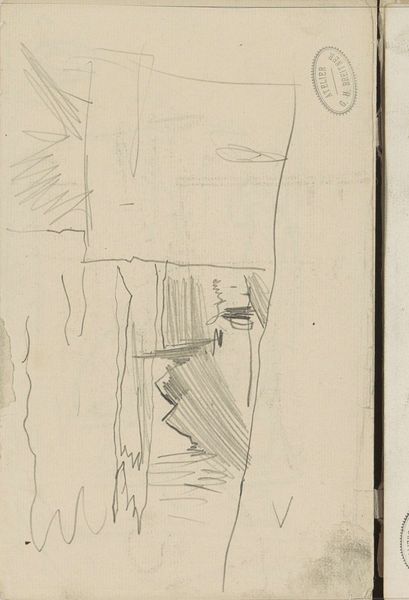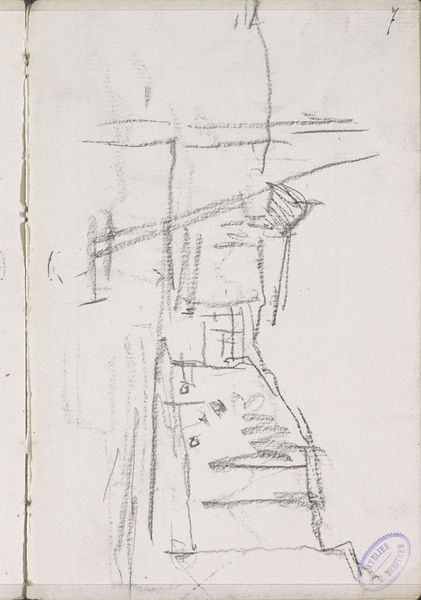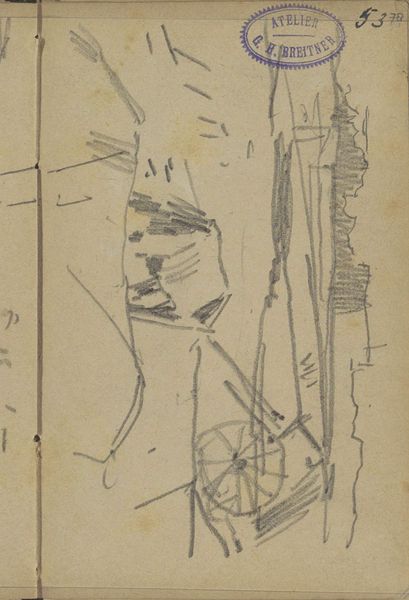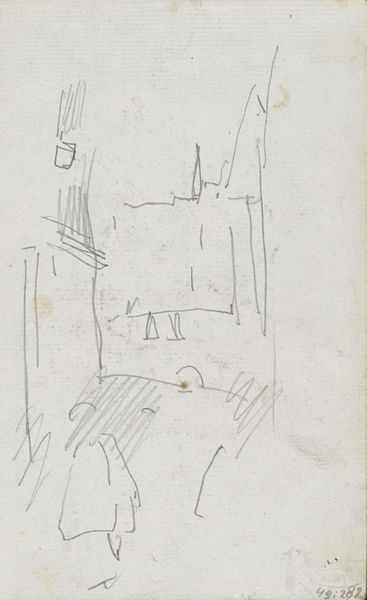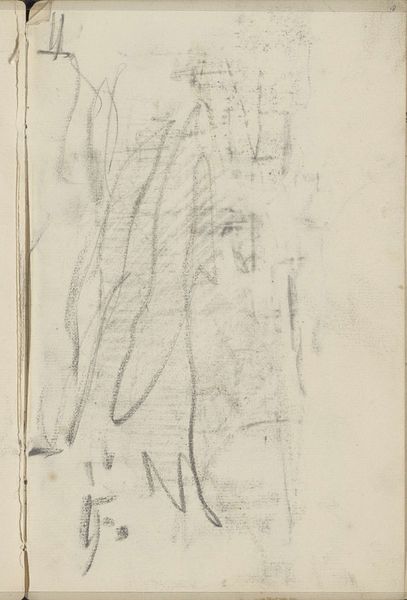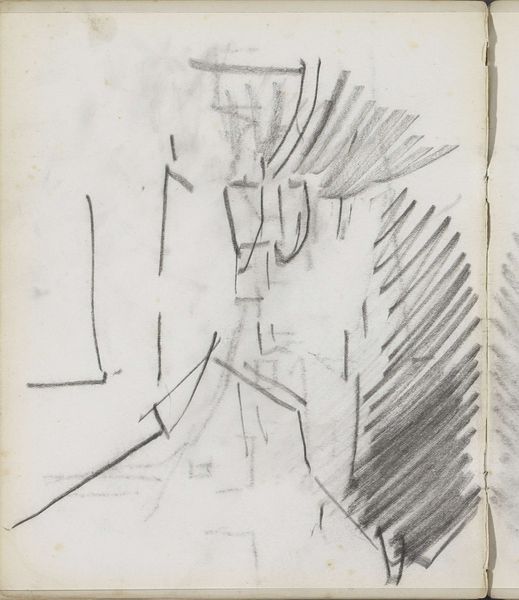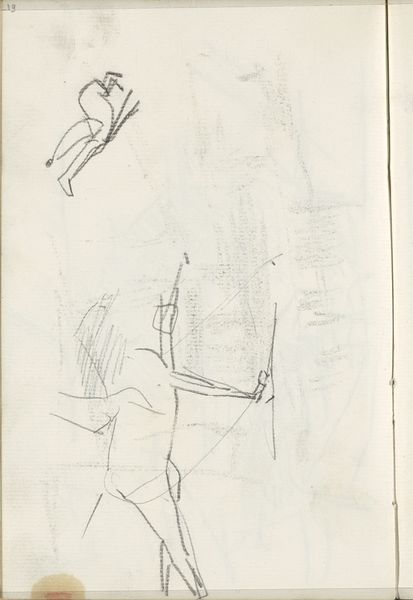
Copyright: Rijks Museum: Open Domain
Editor: This is George Hendrik Breitner’s “Gezicht in Amsterdam,” dating from around 1891-1894, currently held at the Rijksmuseum. It's a graphite and pencil drawing. It feels very fleeting, like a quick impression of the city. What do you see in this piece? Curator: Ah, Breitner. He's always capturing these snippets of Amsterdam life, isn't he? To me, this drawing hums with the pulse of the city. It's almost like he's scribbling down a memory before it fades. Do you notice how little detail there actually is? Editor: Yeah, it’s barely there. But somehow you still get a sense of the buildings and maybe even the atmosphere. Curator: Exactly. And that's Breitner's genius, really. He's giving us just enough information to spark our own imaginations. What kind of sounds do you think you might hear if you were standing in this scene? Editor: Hmm, probably horse-drawn carriages, maybe some snippets of conversation, definitely the wind. I almost feel like I’m there, even though it's just a sketch. Curator: See? That’s the power of suggestion! Breitner leaves so much unsaid, he practically invites us into the picture. He trusts us to fill in the gaps with our own experiences. It is like a half written poem. The negative space becomes like musical rests, if that makes sense? Editor: That's a beautiful way of putting it! It makes me think differently about what "finished" art even means. I used to think more detail equaled “better.” Curator: Not at all! Sometimes it is more like stripping down. Breitner seems to realize there is more space for an audience in something less definitive, something almost ghost-like. And, by the way, look up some photographs from this time, of Amsterdam: you’ll see how spot-on Breitner’s capturing of that period of urbanization, when horse carriages started mixing with modernity! A good place to stop pondering perhaps. Editor: Definitely. This has made me see the value of less being more.
Comments
No comments
Be the first to comment and join the conversation on the ultimate creative platform.


